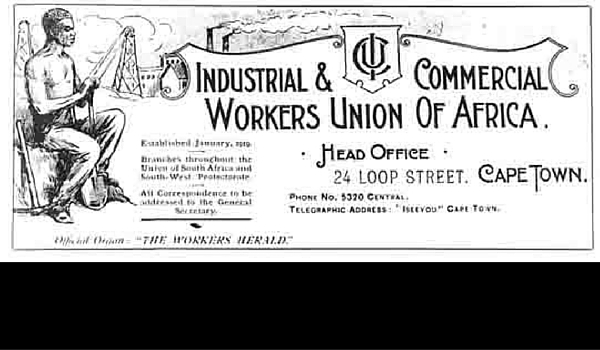
Marikana Is Not New: A History of Government’s Response to Workers Unions in South Africa
The tragedy of Marikana is troubling but not surprising for the South African government. Perhaps its a testament to the fact that you can change the race of government but not the policies and ideologies of that government. This article provides a brief history of labor unions in South Africa and government response which mirrors their present day actions.
In the early part of the 20th century, many Africans from other countries would got to South Africa to work in the mining industry. The growth of this sector also attracted many white skilled laborers. The white skilled workers were often paid at least 10 times more than black laborers. However, after some time the mine owners began replacing highly paid white workers with low paid skilled black laborers so that they could pay lower wages. White workers decided to strike to stop mine owners from replacing them with black skilled laborers. In order to send a message to their employers, the white mine workers used guns to take over the mines. The South African government then responded by sending the army in support of the mine owners. The army used airplane bombs to stop the strike and by the end of it about 150 white laborers had been killed, 500 were wounded and over 5,000 arrested. To top it all, four white laborers were hanged for organizing this strike. After this incident, the government passed a new law to make sure that all well paid skilled jobs would be reserved for whites only.
BLACK LABOR UNIONS
The first black union was formed in 1918 and called the Industrial Workers of Africa (IWA). The IWA would print their materials in different African languages because the diverse nature of workers in the mines. The labor union demanded higher wages and attacked racial laws that exploited black people. The union led the 1919 and 1920 campaigns against pass laws.
In February 1920, thousands of black miners went on strike. 71,000 miners refused to work for 12 days which led to 21 mines shutting down. In true South African fashion, the government called in the police and army and surrounded the workers’ compounds. Workers were beaten and commanded back to work at gunpoint and in some instances shot.
In 1919, a Malawian worker called Clements Kadalie formed another labor union called the Industrial and Commercial Workers Union (ICU). The ICU has branches around South Africa and eventually even in Zimbabwe. By 1927, this labor union had over 100,000 members. While Kadalie did not organize strikes he went around giving speeches addressing the oppression of black workers and hoping the government would listen to their point of view. As a result, his organization was not able to achieve meaningful results and workers began leaving the union. Other unions emerged in South Africa related to a particular industry such as the Garment Workers Union. By 1955, there were 119 different black industrial trade unions representing about 158,000 workers.
In 1946, the African Mine-Workers Union led by J.B. Marks organized a strike of over 60,000 black miners. They demanded higher wages and better working conditions. Again the government and mine owners refused to listen to their demands and sent the police and army to surround their compounds and forced them back to work at gunpoint. As a result, 12 miners were killed and more than 1,000 injured. However, this did not deter black unions. Following this, the factory workers also went on strike.




2 Comments
by Gwen nxumalo
The present ANC government kept the structures of apartheid & apartheid mentality. This is harmful to Africans. It explains why they willingly opened fire on innocent unarmed civilians.
by bonface
Im enjoying each and every post……keep the fire burning
Comments are closed.